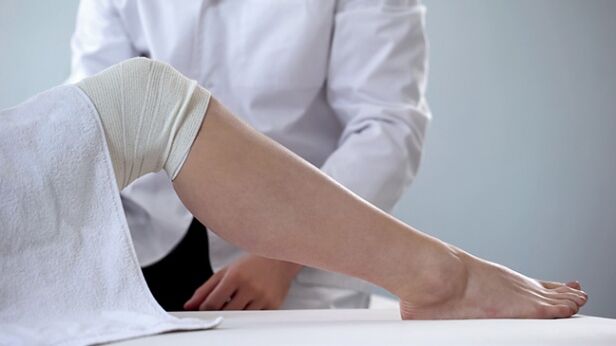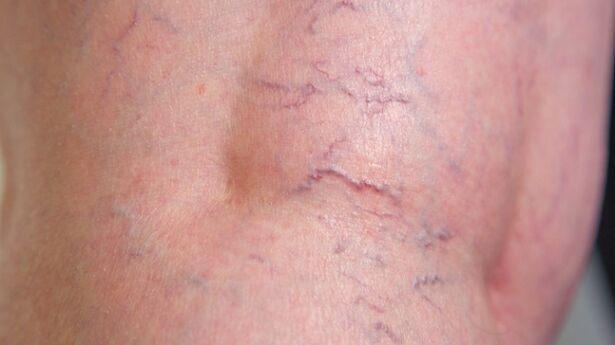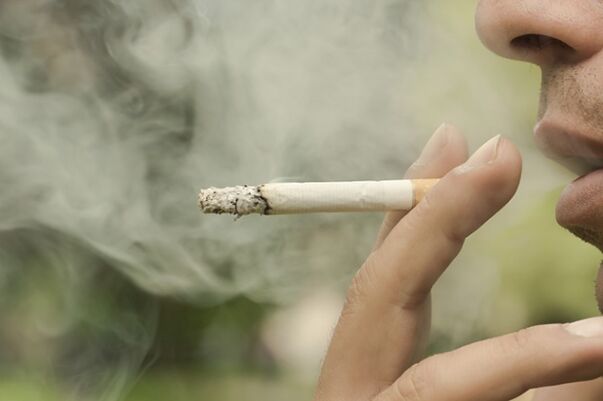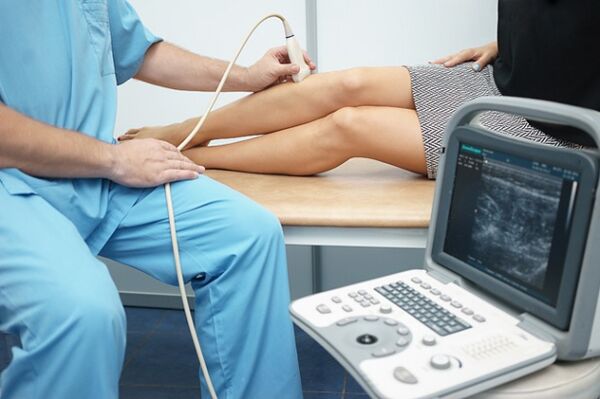Vascular diseases have several symptoms and it is not always possible for a person without medical training to understand them. Any chronic disease has its own clinical picture and requires certain treatment. There is a classification according to the nature of the course of the disease, therefore, pathologies that occur mildly and severely are differentiated.

What are reticular varicose veins? What diseases does he refer to? What if you've been diagnosed with it? He is dangerous? How and how to treat lower limb reticular varicose veins? In our article, you will find answers to the most frequently asked questions. We will help you understand not only in terms of cardiovascular disease, but also inform you about the causes of the disease, its symptoms and the main methods of treatment.
Reticular varicose veins of the lower limbs: what is it?
The appearance of dilation of fine veins located subcutaneously, with a diameter of several millimeters, is called reticular veins or reticular varicose veins. That is, this type of pathology will manifest as an increase in the venous pattern. Often, the smaller vessels in the upper papillary layer of the dermis are simultaneously affected and telangiectasias are formed - vascular "nets" or "stars". The patient develops linear, stellate, reticulate, or branching "patterns" of intertwined veins and filamentous saphenous veins. They are bluish, greenish, ruby or lilac in color.

Most often, reticular varices are located in the lower extremities, affecting the veins on the lateral surface of the thigh and legs. Varicose veins in both lower extremities in the early stage of varicose veins are extremely common. It is noteworthy that the area of location of the altered vessels is not just the region of the legs and legs as a whole, it can be the face, abdomen and other parts of the body. The owners of a pronounced venous pattern on the skin of the legs are usually female, sometimes formed in males.
How serious is this diagnosis? Due to the involvement of thin intradermal veins, the nature of the disease is classified as mild, the degree of manifestation of venous insufficiency is initial. It is generally accepted that the only drawback will be the unsightly appearance of the patient, who has been diagnosed with reticular veins in the lower limbs. But not all experts subscribe to this opinion.
Opinion of an 'expert
Although reticular varices have a predominantly mild course, it is mainly a disease of the superficial veins, being considered one of the first manifestations of venous insufficiency. If you don't pay attention to varicose veins for a long time, it is possible that the symptom complex will grow and the condition will worsen, until the formation of varicose veins and trophic ulcers at the site of the vascular "mesh".

Reticular varices of the legs: causes
In the vast majority of cases, vascular diseases develop as a result of a combination of factors that trigger the pathological process, therefore, they are considered multifactorial. But even so, when studying the pathogenesis of vascular diseases, the main reason for the emergence of reticular veins is an inherited predisposition. In individuals with unfavorable combinations of hereditary factors, a certain structure of the vein wall is already determined, which predisposes to the appearance of varicose veins. Along with this reason, there is congenital weakness of the vascular walls, which occurs as a result of intrauterine exposure to pathogenic factors in the fetus.
In addition to the predetermined structural features of the above venous channels, the development of varicose veins is facilitated by:
the presence of bad habits - smoking and alcohol;
unbalanced diet, passion for diets (including vegetarian);
hormonal imbalance and hormonal therapy;
pregnancy, abortion, childbirth, menopause;
overweight;
inactive lifestyle;
arterial hypertension;
severe liver damage;
Allergic reactions;
professional activity associated with static loads on the legs (work "sitting" / "standing");
wear uncomfortable clothes and shoes (squeezing elements, modeling underwear, narrow shoe shapes, etc. ).

Unfortunately, the prerequisites that lead to the development of reticular varices are not limited to this list. Beauty salon customers who undergo shugaring, chemical peels, and visit a solarium are also at risk; and those who go to the gym doing weight training on their legs, as well as those who choose sports with a high level of shock load (jumping, grabbing, etc. ).
Signs and symptoms of reticular varicose veins
What is the clinical picture of reticular varicose veins? One of the first and often the only early-stage signs of varicose veins is a clearly visible, cyanotic-reddish subcutaneous venous pattern. A mesh of many finer vessels appears mainly on the inner and posterior surfaces of the thighs and ankles. In extremely rare cases, when pressing it, pain can occur.
Reticular varices are characterized by swelling, tension, heaviness, itching, intradermal hemorrhage, spontaneous fever in the legs, and involuntary spasm of the calf muscles.
Ignoring the primary symptoms of the disease leads to its progression and complications. Remember, with absolutely healthy vessels, they will never be visible. So even if the spider's web emerging from the finest strands of veins doesn't cause you any inconvenience, it's very likely only temporary. Any illness is always easier to eliminate and possibly even without consequences if treated in a timely manner.

Reticular varices of the legs: treatment
In this section of our article, we'll talk in detail about how to cure reticular varicose veins. We'll answer the most important questions - what the course of action should be if you find signs of varicose veins in you, which doctor treats you, and many others.
The first step on the road to recovery, if one or more symptoms that reticular varicose veins are detected, should be a visit to the doctor. In this case, you can either contact a therapist who will refer you to a vascular surgeon, angiologist, or phlebologist, or go directly to these physicians with a narrow expertise in venous pathologies. Either of them will interview the patient first and examine the feet, legs, and thighs. Then, a preliminary diagnosis will be announced and an examination plan drawn up to establish a final clinical diagnosis. The patient's examination plan will include the necessary diagnoses - laboratory and instrumental. To obtain as much information as possible about the status of the deep veins, the severity of changes in the superficial veins, and the consistency of the perforating veins, the patient will undergo an ultrasound. Based on the test results, the doctor will re-evaluate signs of illness, select the optimal treatment, and make recommendations.
How are reticular veins treated? Its treatment, like the treatment of any vascular disease, is carried out in two ways: conservative and operative. Each of the methods includes a set of methods.
Conservative treatment of varicose veins includes expert recommendations regarding lifestyle and nutrition. Unfortunately, despite the obvious benefits of the principles of good nutrition and a healthy lifestyle, we don't give these concepts the necessary level of importance. All the systems and organs of the human body will never function normally in the presence of bad habits and in the absence of moderate physical exertion, good rest, correct daily regimen, and nutrition.
Proper nutrition helps to improve health and prevent all illnesses.
For a patient with developing varicose veins:
it is not advisable to eat smoked, spicy, fried foods, and it is also necessary to reduce the consumption of salt and sweets;
it is not advisable to take significant breaks between meals and go hungry;
a large amount of berries, fruits, vegetables and herbs should be kept stably in the diet;
Eating whole wheat, rye, oats and barley for breakfast can be helpful.
it is better to prefer natural juices than soft drinks.

It's difficult to rebuild your habitual behavior according to the fundamentals of a healthy lifestyle and start eating right away. By striving and following the doctor's recommendations, the patient will make a significant contribution to improving the quality of their own life.
Reticular varicose veins allow treatment with water procedures at home. The contrast shower for the feet stimulates blood circulation, optimizes the functioning of the valve system in the veins and increases the tone of the venous wall.
Opinion of an 'expert
To eliminate the symptoms that cause varicose veins, drug treatment is necessary. The effect on the veins takes place in a complex way: internally - with pills and capsules, as well as externally - through the application of ointment, gel or cream. Medications are also used to prevent disease progression and eliminate the risk of complications.
For this, doctors prescribe preparations of the venotonic group, based on synthetic and natural plant components. These funds have a broad spectrum of therapeutic action and have a systemic effect:
helps improve blood circulation;
eliminate pain syndrome and a feeling of heaviness in the legs;
have a positive effect on strengthening the vascular wall and capillaries;
prevent the development of swelling;
stop the inflammatory process;
help get rid of bruises, etc.
The dosage of medications and methods of use are prescribed by the attending physician, taking into account the signs of varicose veins and the dynamics of their development.
Particular attention must be paid to a factor in the development of vascular pathologies such as pregnancy and, in particular, how exactly to treat varicose veins during this period. When carrying a fetus, all treatment methods should be as safe as possible.
To reduce varicose veins, including during pregnancy, experts recommend compression underwear.
They can be knee length, stockings or elastic bandages. The compression class directly affects the type of clothing - it can be prophylactic (0-1 degrees) and therapeutic (2-3 degrees).
In cases where the reticular varices need to be eliminated immediately or the disease progresses rapidly, miniphlebectomy, laser treatment (photocoagulation), microsclerotherapy of telangiectasia and sclerotherapy of reticular veins are used. The most suitable method for treating reticular varices is determined by the physician individually for each patient.

Reticular varicose veins: gymnastics
To normalize the processes of lymph flow, venous blood flow, peripheral blood circulation and increase vein tone, experts recommend systematic therapeutic exercises.
The set of exercises is not difficult and varied. For each patient, a specialist in the exercise therapy room will design a program of 3 to 5 movements, which should be performed at least twice a day, 10 to 15 times per approach. The exercises will be tailored to the patient's physical abilities, age and other characteristics.
The most popular exercises are considered "birch", "bicycle", "scissors", heel-to-toe roll, walking in place, and others.
The specialist will tell you how to correctly perform this or that movement and what to avoid when choosing exercises on your own.
Reticular varices: treatment with folk remedies
Some patients with lower limb reticular varicose veins are interested in the question: is it possible to treat with folk remedies? The use of alternative medicine methods as part of complex therapy is not excluded.
With the help of popular recipes for internal and external use, symptoms can be alleviated. Based on the results of many years of experience, it is considered an extremely effective product based on garlic, birch buds, horse chestnut, verbena, nutmeg, knotweed and natural apple cider vinegar.
As a rule, the most popular prescriptions do not have special contraindications, but it is always good to remember that self-medication can cause irreparable harm. Therefore, the use in the treatment of varicose veins of any alternative medicine prescription, even the most harmless at first sight, should always be agreed with the treating physician.
For an accurate diagnosis, contact a specialist.























